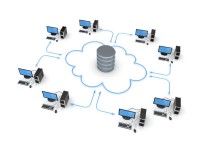Future Trends of Cloud Computing – How Businesses Can Sustain Improving Business Performance
It is a fact that cloud computing technology has revolutionized the IT industry. But is this craze is here to stay? The cloud computing forecast report from International Data Corporation (IDC) predicts that cloud-based services will earn a revenue of $43.2 billion by 2016. The report indicates that cloud computing is not a fad, and is an important technology for businesses to leverage in order to succeed. Here are just a few if the main areas businesses need to focus on to sustain their growth:
Secure your networks
First of all, cloud computing technology introduced higher levels of agility to business processes. At the same time, it requires greater levels of expertise to handle complexity in IT networks. The problem with cloud computing networks is its interconnected nature. If an intruder finds a single point of vulnerability, he can gain access to thousands of systems. This can turn into a disaster for businesses that handle critical volumes and sensitive data. However, companies that offer cloud-based services are implementing cloud-ready security programs. For instance, GMO Cloud implements a cloud-ready security program that proactively identifies potential threats and online intrusions that attack interconnected or heterogeneous networks and effectively prevents them.
Cloud and mobile
While cloud computing networks are increasingly being implemented, Bring Your Own Device (BYOD) programs are becoming more popular too. More and more cloud-based applications are created to provide mobility solutions to back-end database systems. Often, people access data using mobiles or other high-end gadgets. As the cloud and mobile converge, businesses need to concentrate on optimizing infrastructure to take advantage of this growing trend.
BYOD environments transforming into BYOC
In a cloud computing environment, everything is agile—including technology changes. While Bring Your Own Device (BYOD) was an innovative concept, it is not new anymore. Today, Bring Your Own Cloud (BYOC) is the new buzz term. While employees use their own devices to access enterprise networks, businesses have to ensure that corporate data and personal data are separately managed. Employees have a lot of personal data they share with friends. Since they are using the same device to share personal data, corporate data needs to be secured. While cloud companies have high security measures in force, it is the responsibility of businesses to provide access to specific applications.
Monopolies reduced
In the future, you can expect to see less of a monopoly of top companies dominating the IT segment. Large enterprises possess high-end computing resources, data management tools, and infrastructure to take advantage of technological changes. The introduction of cloud computing has brought cutting edge technologies to small and medium-sized businesses. Today, everyone can take advantage of this innovative technology to enjoy highly scalable infrastructure that works on world class technologies. In addition, home users can also own a public or a private cloud to host personal data as well as business data. Any new advancement in technology is enjoyed by everyone.
While cloud computing technology offers business agility, the key to success lies in sustaining this improved performance. As cloud computing trends change quickly, businesses that that are adept at forecasting these technological changes are in a good position to out-pace their competitors.
Be Part of Our Cloud Conversation
Our articles are written to provide you with tools and information to meet your IT and cloud solution needs. Join us on Facebook and Twitter.
About the Guest Author:

Kaushik Das is an engineer, research analyst and a technical writer in the areas wireless, IT, enterprise software, next-generation hosting, storage and renewable energy. He specializes in competitive analysis, market research, industry insights, white paper and actionable web content development.


 Sankarambadi Srinivasan, ‘Srini’, is a maverick writer, technopreneur, geek and online marketing enthusiast rolled into one. He began his career as a Naval weapon specialist. Later, he sold his maiden venture and became head of an offshore Database administration company in Mumbai. He moved on as Chief Technology Officer of one of the largest online entities, where he led consolidation of 300 online servers and introduced several Web 2.0 initiatives. He holds a Master’s degree in Electronics and Telecommunication.
Sankarambadi Srinivasan, ‘Srini’, is a maverick writer, technopreneur, geek and online marketing enthusiast rolled into one. He began his career as a Naval weapon specialist. Later, he sold his maiden venture and became head of an offshore Database administration company in Mumbai. He moved on as Chief Technology Officer of one of the largest online entities, where he led consolidation of 300 online servers and introduced several Web 2.0 initiatives. He holds a Master’s degree in Electronics and Telecommunication.


 Sanjay Srivastava has been active in computing infrastructure and has participated in major projects on cloud computing, networking, VoIP and in creation of applications running over distributed databases. Due to a military background, his focus has always been on stability and availability of infrastructure. Sanjay was the Director of Information Technology in a major enterprise and managed the transition from legacy software to fully networked operations using private cloud infrastructure. He now writes extensively on cloud computing and networking and is about to move to his farm in Central India where he plans to use cloud computing and modern technology to improve the lives of rural folk in India.
Sanjay Srivastava has been active in computing infrastructure and has participated in major projects on cloud computing, networking, VoIP and in creation of applications running over distributed databases. Due to a military background, his focus has always been on stability and availability of infrastructure. Sanjay was the Director of Information Technology in a major enterprise and managed the transition from legacy software to fully networked operations using private cloud infrastructure. He now writes extensively on cloud computing and networking and is about to move to his farm in Central India where he plans to use cloud computing and modern technology to improve the lives of rural folk in India.


